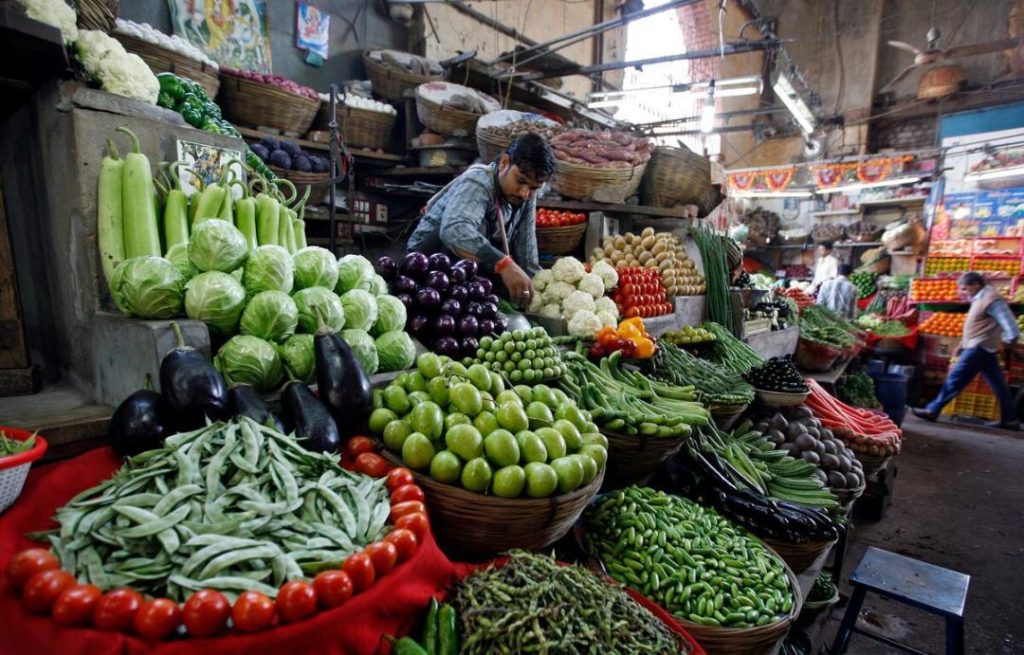
Which items saw highest & lowest inflation in January?
January is often considered the beginning of a new year, full of hope and promise. However, for many of us, the start of the year is also marked by the increasing prices of essential commodities. Inflation, a staple of economic life, is a constant concern for consumers, businesses, and policymakers alike. As we navigate the complexities of inflation, it becomes essential to keep a close eye on the items that are experiencing the highest and lowest inflation rates.
According to recent data, the top five items showing the highest year-on-year inflation at the all-India level in January 2025 are Coconut oil (54.20%), Potato (49.61%), Coconut (38.71%), Garlic (30.65%), and peas [vegetables] (30.17%). On the other hand, the key items having the lowest year-on-year inflation in January 2025 are Jeera (-32.25%), Ginger (-30.92%), Dry chillies (-11.27%), Brinjal (-9.94%), and LPG (-9.29%).
Let’s take a closer look at the top five items with the highest inflation rates.
Coconut oil (54.20%)
Coconut oil, a staple in many Indian households, has seen a whopping 54.20% year-on-year inflation in January 2025. This is likely due to the increasing demand for the commodity, particularly in the wake of the COVID-19 pandemic. As people shifted towards healthier and more sustainable options, the demand for coconut oil surged, leading to a significant price increase.
Potato (49.61%)
Potatoes are another essential commodity that has seen a significant price hike in January 2025, with an inflation rate of 49.61%. This is likely due to the increasing demand for potatoes, particularly in the wake of the COVID-19 pandemic, when people opted for more comfort food options. Additionally, the unseasonal rains in some parts of the country may have impacted potato production, leading to a shortage and subsequent price increase.
Coconut (38.71%)
Coconuts, another staple in many Indian households, have seen a 38.71% year-on-year inflation in January 2025. This is likely due to the increasing demand for coconut products, particularly in the wake of the COVID-19 pandemic. As people shifted towards healthier and more sustainable options, the demand for coconut products surged, leading to a significant price increase.
Garlic (30.65%)
Garlic, a staple in many Indian households, has seen a 30.65% year-on-year inflation in January 2025. This is likely due to the increasing demand for garlic, particularly in the wake of the COVID-19 pandemic, when people opted for more comfort food options. Additionally, the unseasonal rains in some parts of the country may have impacted garlic production, leading to a shortage and subsequent price increase.
Peas [vegetables] (30.17%)
Peas, another essential vegetable, have seen a 30.17% year-on-year inflation in January 2025. This is likely due to the increasing demand for peas, particularly in the wake of the COVID-19 pandemic, when people opted for more comfort food options. Additionally, the unseasonal rains in some parts of the country may have impacted pea production, leading to a shortage and subsequent price increase.
Now, let’s take a look at the key items with the lowest year-on-year inflation rates.
Jeera (-32.25%)
Jeera, a staple spice in many Indian households, has seen a staggering -32.25% year-on-year inflation in January 2025. This is likely due to the increasing supply of jeera, particularly in the wake of the COVID-19 pandemic, when people shifted towards more online shopping options. Additionally, the government’s efforts to boost domestic production and reduce imports may have also contributed to the decrease in jeera prices.
Ginger (-30.92%)
Ginger, another staple spice in many Indian households, has seen a -30.92% year-on-year inflation in January 2025. This is likely due to the increasing supply of ginger, particularly in the wake of the COVID-19 pandemic, when people shifted towards more online shopping options. Additionally, the government’s efforts to boost domestic production and reduce imports may have also contributed to the decrease in ginger prices.
Dry chillies (-11.27%)
Dry chillies, a staple spice in many Indian households, have seen a -11.27% year-on-year inflation in January 2025. This is likely due to the increasing supply of dry chillies, particularly in the wake of the COVID-19 pandemic, when people shifted towards more online shopping options. Additionally, the government’s efforts to boost domestic production and reduce imports may have also contributed to the decrease in dry chillies prices.
Brinjal (-9.94%)
Brinjal, a staple vegetable, has seen a -9.94% year-on-year inflation in January 2025. This is likely due to the increasing supply of brinjal, particularly in the wake of the COVID-19 pandemic, when people shifted towards more online shopping options. Additionally, the government’s efforts to boost domestic production and reduce imports may have also contributed to the decrease in brinjal prices.
LPG (-9.29%)
LPG, a staple cooking fuel, has seen a -9.29% year-on-year inflation in January 2025. This is likely due to the increasing supply of LPG, particularly in the wake of the COVID-19 pandemic, when people shifted towards more online shopping options. Additionally, the government’s efforts to boost domestic production and reduce imports may have also contributed to the decrease in LPG prices.
In conclusion, January 2025 has seen a mixed bag of inflation rates, with some essential commodities experiencing significant price hikes, while others have seen decreases. As we navigate the complexities of inflation, it becomes essential to keep a close eye on the items that are experiencing the highest and lowest inflation rates. By doing so, we can better prepare ourselves for the economic challenges that lie ahead.
Source:






